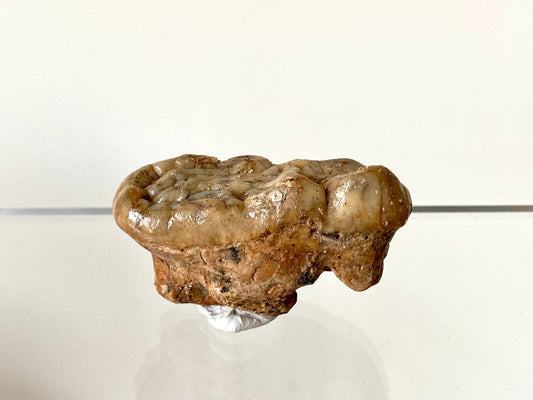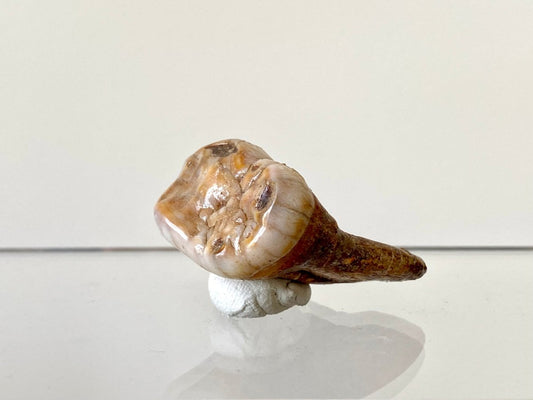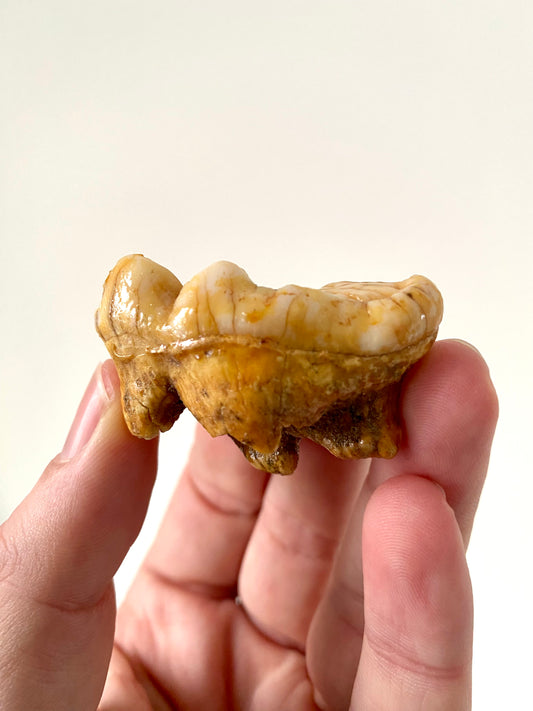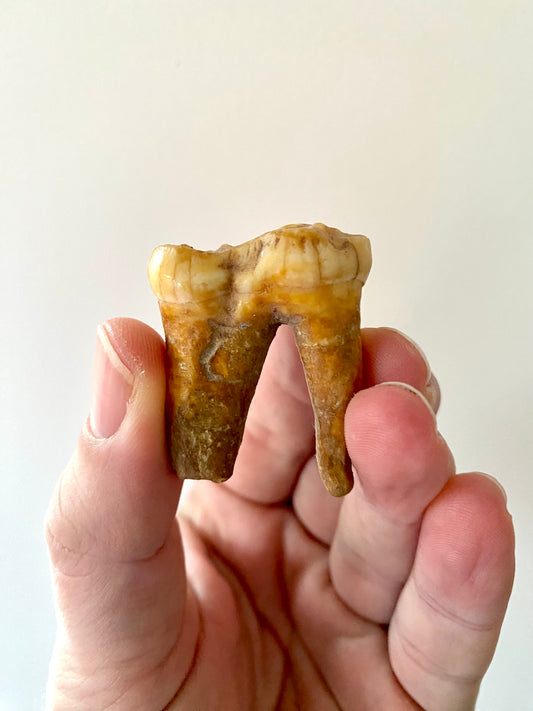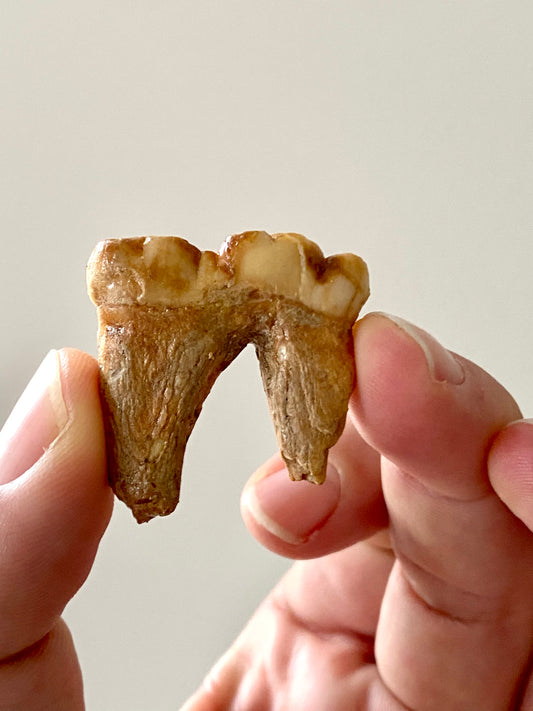Collection: Cave bear fossils for sale
The cave bear (Ursus spelaeus) was a species of bear that lived in Europe during the Pleistocene epoch, from about 300,000 to 15,000 years ago.
Cave bears were likely omnivorous, with a diet consisting of plants, berries, and possibly some animal matter. The dental structure suggests a capacity for both grinding plant material and consuming meat.
Fossil remains of cave bears, including skulls, bones, and teeth, have been found in various parts of Europe, especially in caves, hence the name Cave Bear.
-
1.94" Cave Bear Molar from Rumania, Ursus Spelaeus fossil
Regular price €55,00 EURRegular priceUnit price / per -
1.54" Cave Bear Molar from Rumania, Ursus Spelaeus fossil
Regular price €39,50 EURRegular priceUnit price / per -
1.43" Cave Bear Molar from Rumania, Ursus Spelaeus fossil
Regular price €45,00 EURRegular priceUnit price / per -
Cave Bear Molar
Regular price €36,95 EURRegular priceUnit price / per -
Cave Bear Molar
Regular price €32,95 EURRegular priceUnit price / per -
Cave Bear Molar
Regular price €24,95 EURRegular priceUnit price / per -
1.32" Cave Bear Molar from Rumania, Ursus Spelaeus fossil
Regular price €30,00 EURRegular priceUnit price / per -

 Sold out
Sold outCave Bear Incisor from Rumania
Regular price €30,00 EURRegular priceUnit price / per -

 Sold out
Sold outCave Bear Molar (Austria)
Regular price €24,95 EURRegular priceUnit price / per -

 Sold out
Sold outCave Bear Vertebra
Regular price €25,00 EURRegular priceUnit price / per -

 Sold out
Sold outCave Bear Molar
Regular price €36,95 EURRegular priceUnit price / per
About Ursus spelaeus: The Magnificent Cave Bear
Ursus spelaeus, commonly known as the cave bear, is a species of prehistoric bear that roamed Eurasia during the Pleistocene epoch, approximately 300,000 to 15,000 years ago. This majestic creature, characterized by its imposing size and unique adaptations, holds a special place in the annals of paleontology.
Physical Characteristics
Ursus spelaeus was one of the largest bears to have ever lived, with some individuals reaching lengths of up to 3.5 meters (11.5 feet) and standing over 2 meters (6.5 feet) tall at the shoulder. It had a robust build, powerful limbs, and a massive skull equipped with formidable jaws and teeth. The cave bear's fur was likely dark brown to black in color, providing insulation against the cold climates of the Pleistocene.
Habitat and Distribution
Cave bears inhabited a wide range of habitats across Eurasia, including forests, grasslands, and mountainous regions. Despite their name, cave bears did not exclusively inhabit caves; rather, they utilized caves as dens for hibernation and shelter. Fossil remains of cave bears have been found in numerous caves throughout Europe, from the Iberian Peninsula to Siberia.
Adaptations and Behavior
Ursus spelaeus possessed several adaptations suited to its environment and lifestyle. Its large size and powerful jaws likely made it an effective predator, capable of hunting large prey such as bison, deer, and even other cave bears. During the harsh winters of the Pleistocene, cave bears entered a state of hibernation in caves, where they would conserve energy and survive on stored fat reserves until spring.
Extinction and Fossil Record
The cave bear, along with many other large mammals of the Pleistocene, became extinct towards the end of the last ice age, around 15,000 years ago. The exact cause of their extinction remains a subject of debate among scientists, with factors such as climate change, habitat loss, and human hunting likely playing a role. Despite their disappearance from the Earth, cave bears left behind a rich fossil record, providing valuable insights into their biology, behavior, and ecological relationships.
Cultural Significance
Cave bears have captured the human imagination for millennia, appearing in myths, legends, and cultural artifacts throughout history. Cave bear bones and fossils have been found in numerous archaeological sites alongside evidence of human occupation, suggesting that early humans interacted with these majestic creatures and may have played a role in their extinction. Cave paintings and carvings depicting cave bears are found in caves across Europe, providing a glimpse into the ancient relationship between humans and these formidable beasts.
Ursus spelaeus, the cave bear, remains an iconic symbol of the Pleistocene epoch, representing the majestic megafauna that once roamed the landscapes of Eurasia. Through their impressive size, unique adaptations, and cultural significance, cave bears continue to captivate the imagination of scientists and enthusiasts alike, reminding us of the rich tapestry of life that has inhabited our planet throughout its long and storied history.
Cave bear fossils for sale


